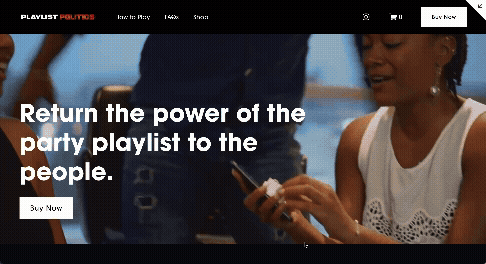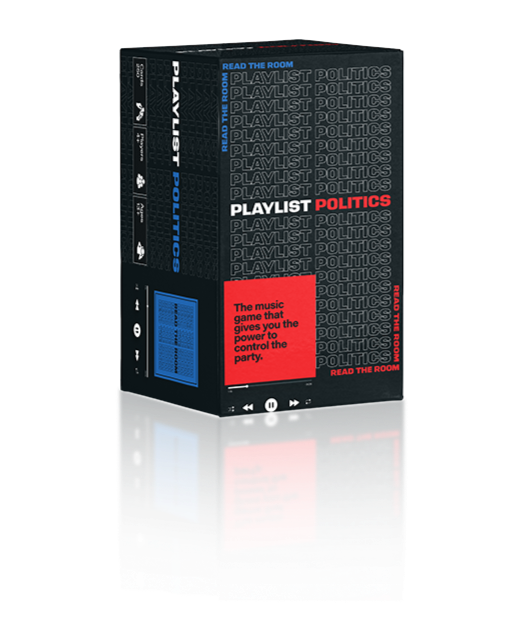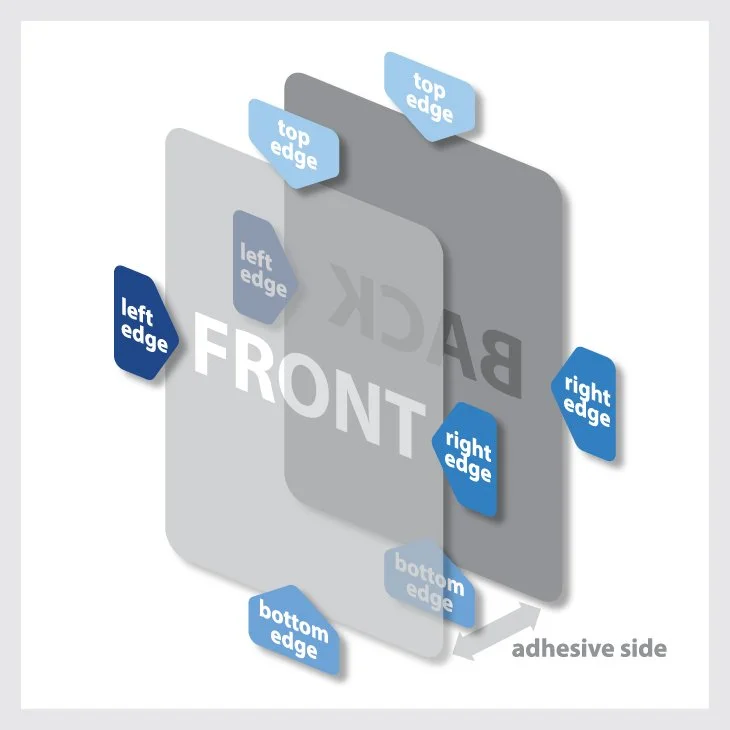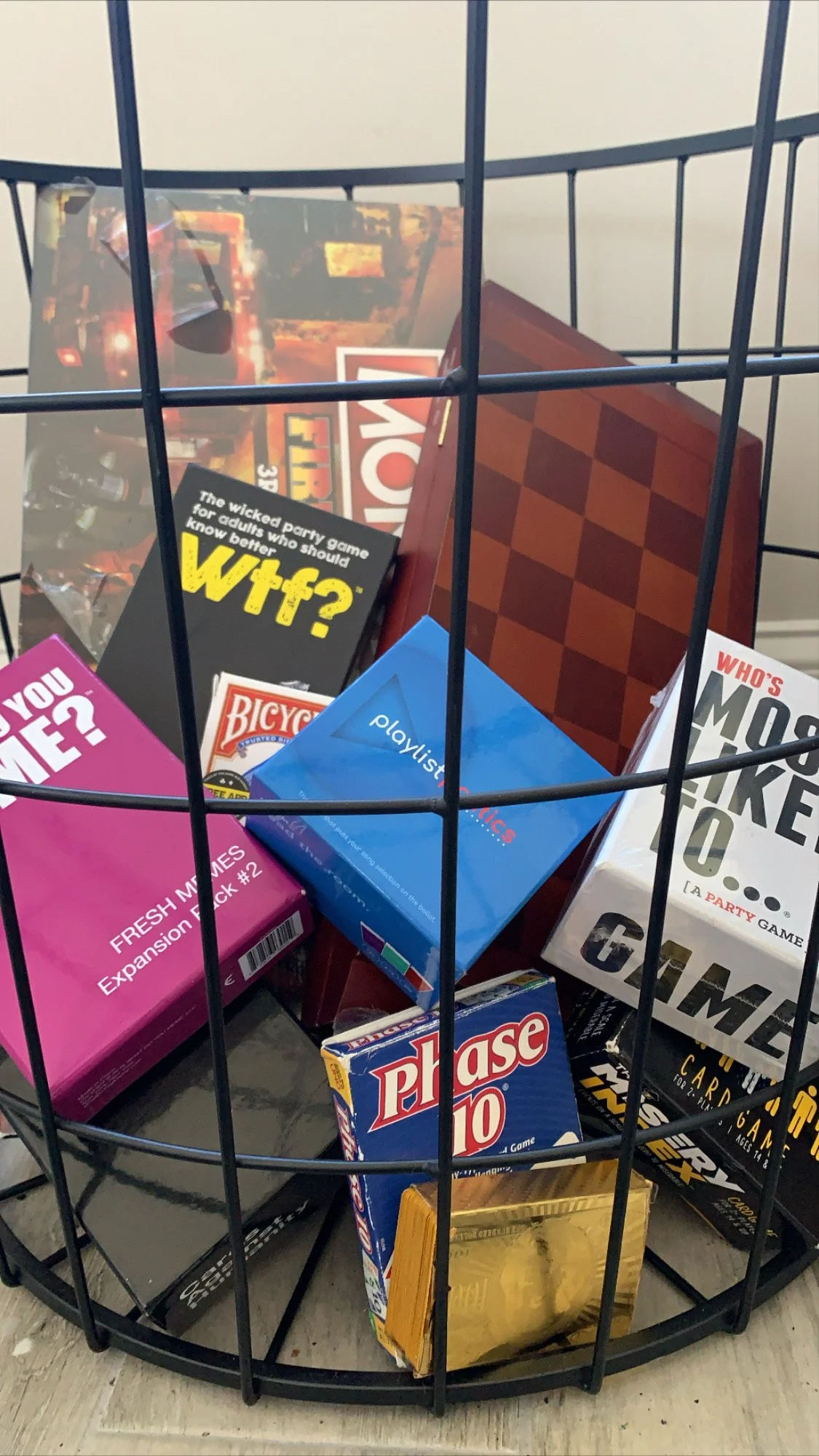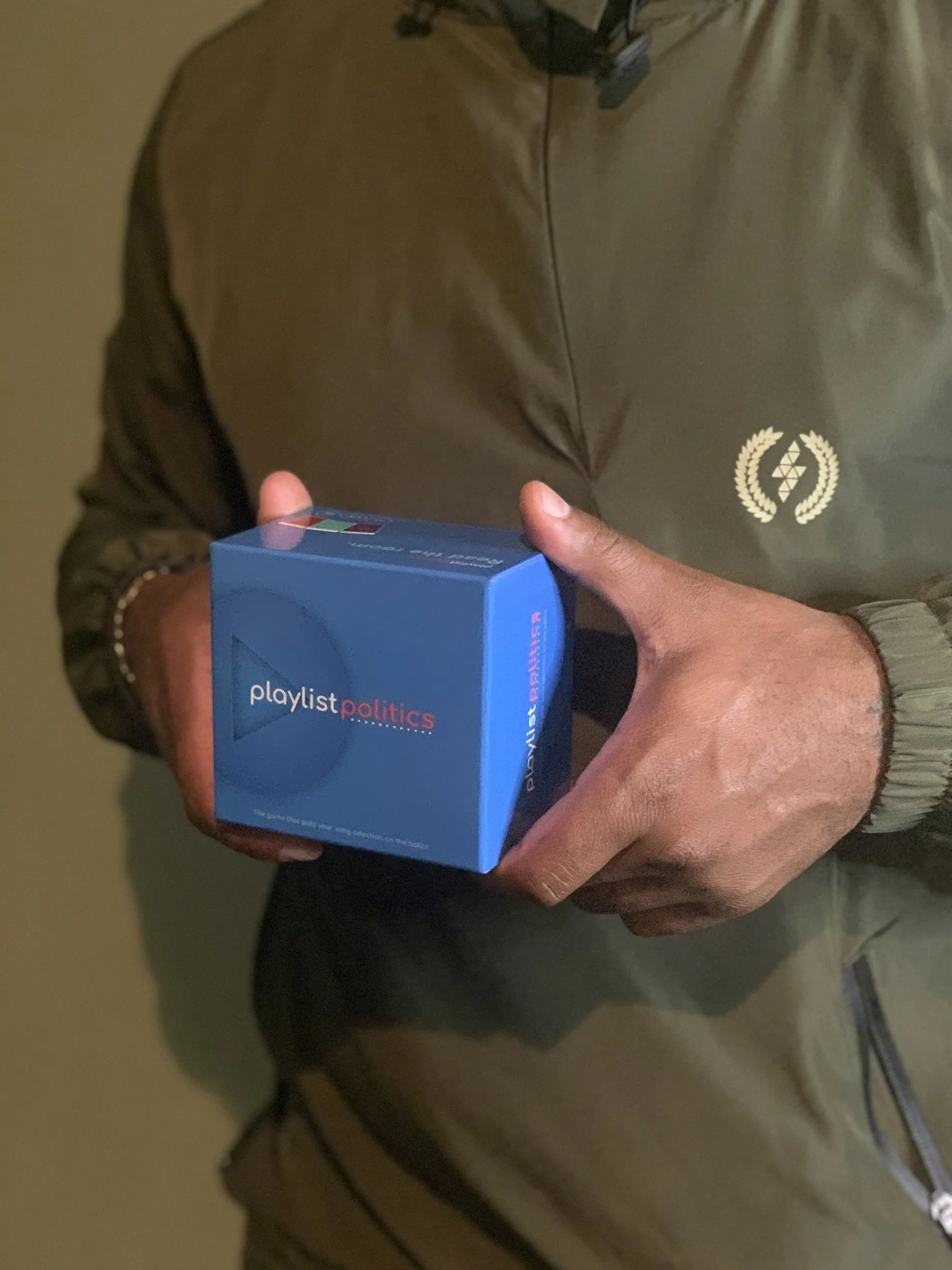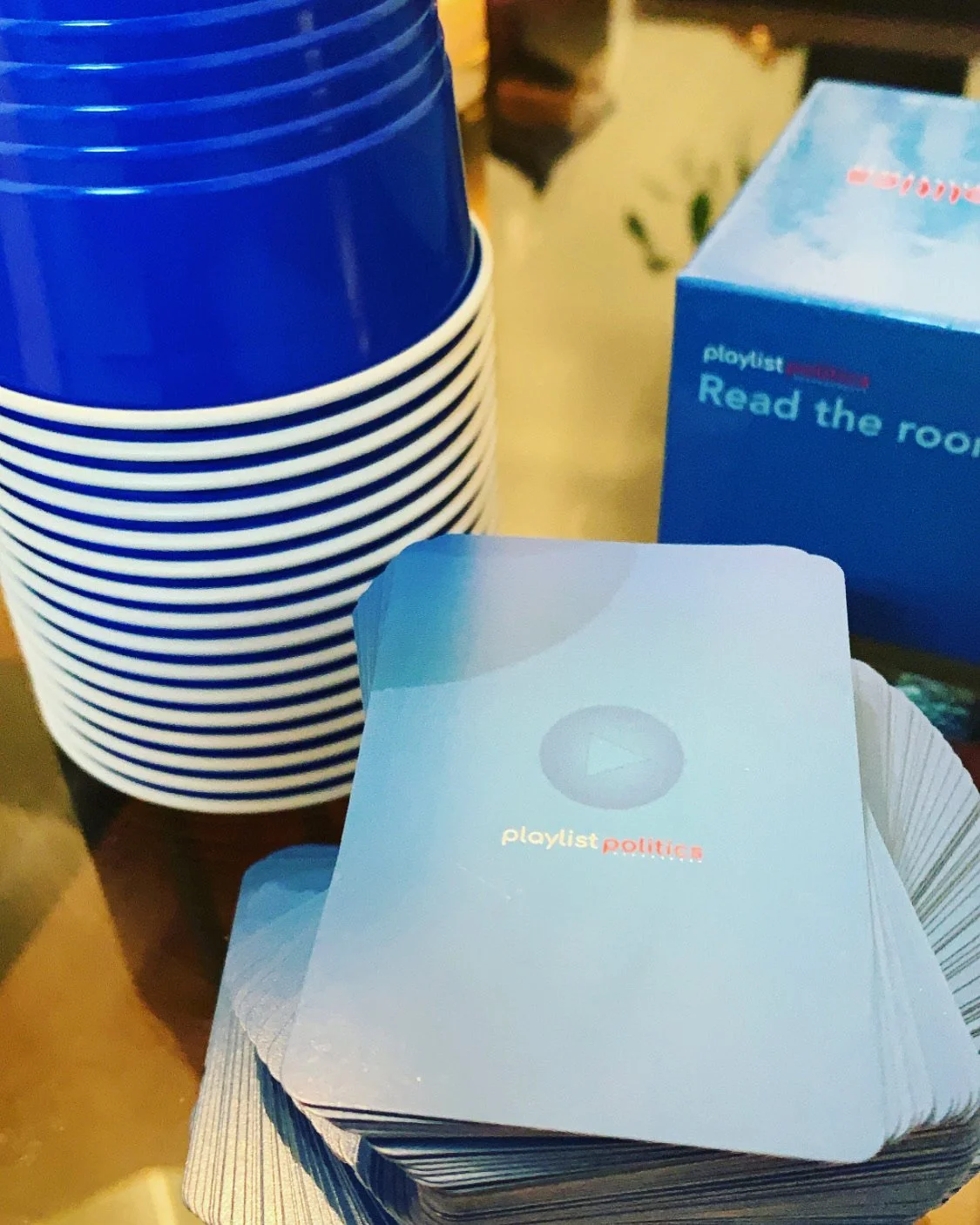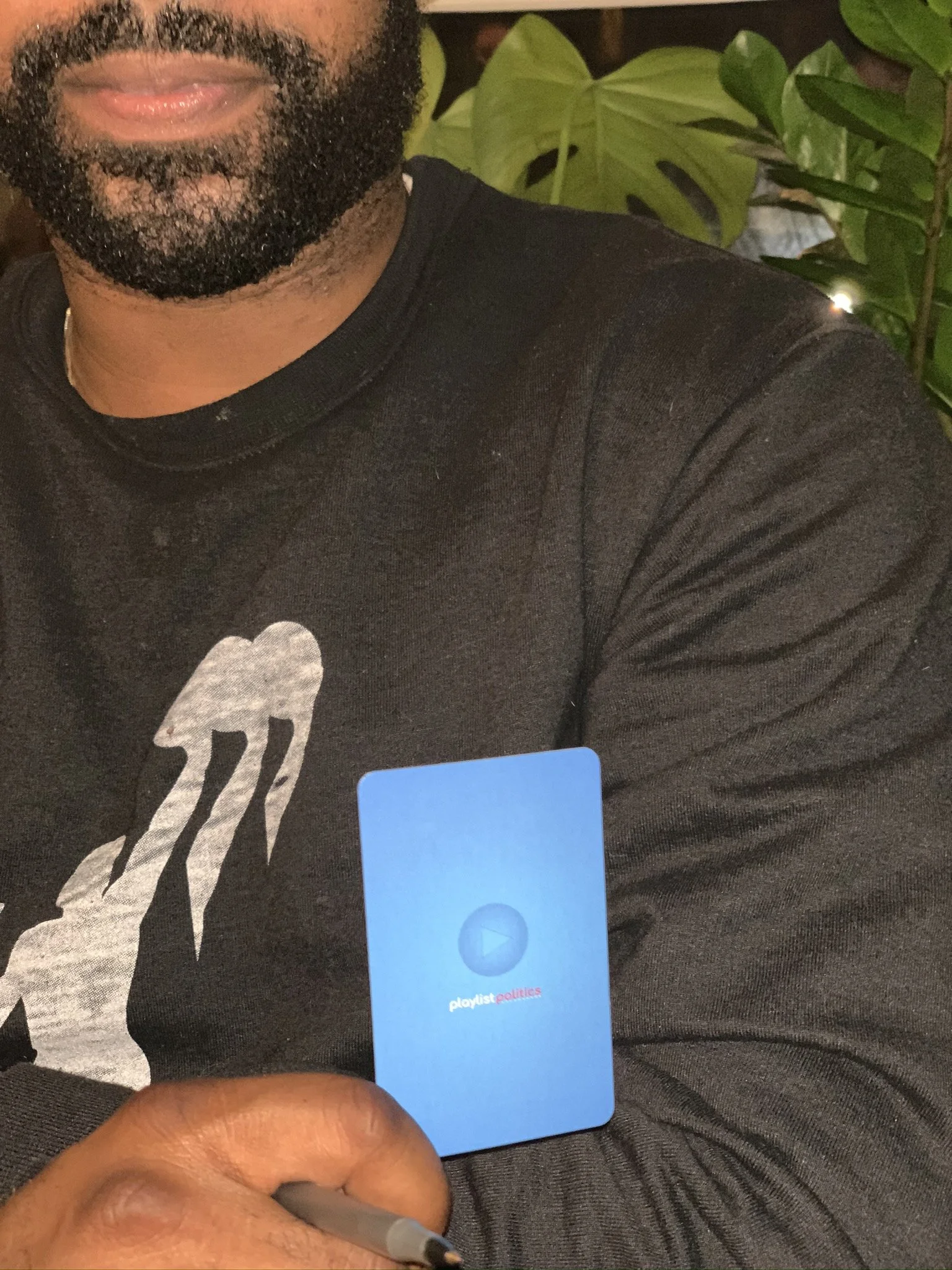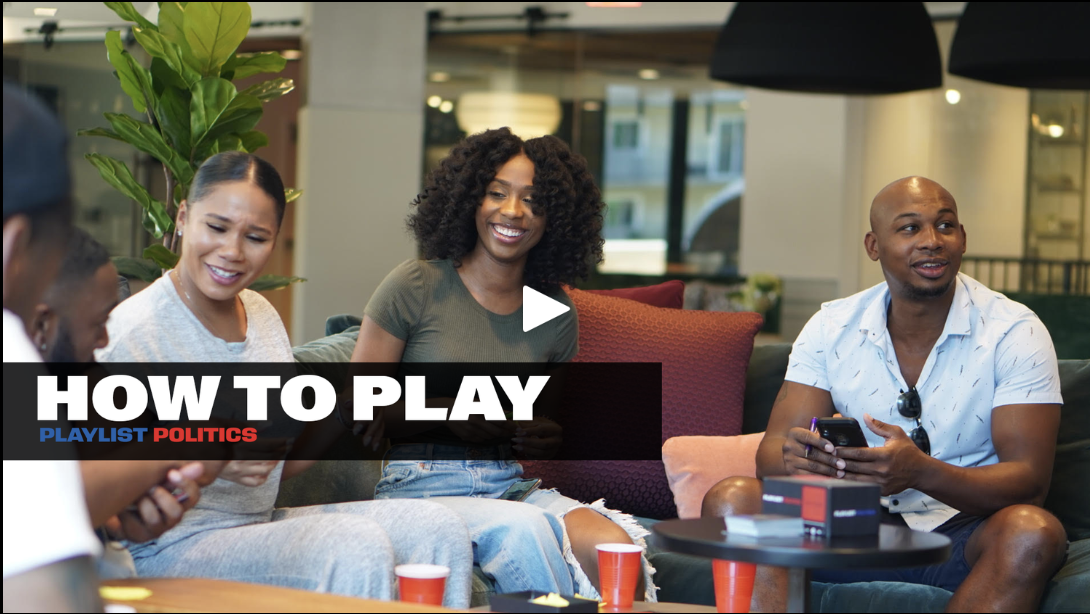Playlist Politics: Building a unified physical & digital experience for a social card game
Creative direction • Product design • Research • UI/UX • Web development
Transforming early prototypes into a cohesive, market-ready game. This case study outlines how I applied a human-centered design process to create a unified experience across the cards, packaging, website, and marketing channels, resulting in strong community engagement, investor backing, and over 300 units sold.
My Role
Creative director, Product designer, Web developer
Duration
10 months, Discovery - In Market
Tools
Figma, Azure, UserTesting, HTML, CSS, Angular, JS
Problem statement.
Playlist Politics started as an informal game during the pandemic. It had no name, brand, or distribution plan. To succeed in a competitive party game market, it needed a clear identity, polished gameplay, and a digital presence that could tell its story and drive sales.
The challenge.
Transform a grassroots, word-of-mouth party game into a market-ready product by creating a cohesive experience that worked both on the table and online. The physical product, branding and website needed to be developed in tandem—while refining gameplay, securing funding and building a loyal audience from the ground up.
Discover
Early concept validation—Pop up game nights
Playlist Politics began organically during the pandemic as a simple, nameless music-based party game shared among friends. To test its potential beyond our inner circle, I brought improvised versions (cards written on pieces of paper) to pop-up game nights, observing how different groups engaged with the prompts and mechanics. These real-world sessions allowed me to validate the core concept and capture early insights on player energy, pace, and interaction.
Observations on gameplay, pace and interaction
Players sometimes improvised turns, leading to inconsistent pacing
Ambiguity in win conditions
Engagement gaps while waiting for your turn
Fun moments came from unexpected song choices and debates
Round length in larger groups
Players forgot rules; need for simpler visual instructions
Some prompts lacked clarity
Market research—Sizing up the competition
To position the then nameless game effectively, I conducted a competitive analysis of other music-based games, examining their rules, gameplay mechanics, marketing strategies, and digital experiences. I also reviewed their brand properties, from packaging and visual identity to tone of voice to identify opportunities for differentiation. This research helped clarify how the game could stand out in a crowded market while appealing to both casual players and music enthusiasts
Identified 3 direct competitors and 5 indirect competitors
Key Insights
Digital experiences often felt like afterthoughts.
Packaging design tended to be visually dull.
Social media marketing skewed toward short bursts during launch, with limited long-term engagement.
Few competitors offered a clear “how to play” video, leaving learning to trial and error.
Brand tone often leaned niche or overly casual, missing opportunities to appeal to a wider audience.
Very few leveraged influencer partnerships for early buzz or credibility.
Define
Naming & framing—Early name and rules take shape
The first iteration, called “Who’s the DJ?”, marked the moment the game started to take real shape. Paired the working name with a basic ruleset to give players more structure and to test how formalized gameplay would impact pace and interaction. While the name didn’t stick, this version was critical in validating the need for clearer rules, defined win conditions and a strong brand identity.
Player personas—Developing personas to guide design decisions
To ensure the game resonated with its audience, I created three personas: the game enthusiast, the music lover, and the social player. Each represented a core motivation for engaging with the game. These personas helped me evaluate rules, prompts, and brand decisions through different player lenses, ensuring the game balanced clarity, cultural relevance, and group energy.
Scoping the game—Outlining the game’s physical components and costs
I mapped out the physical elements of the game — the deck of cards, packaging, and instruction manual — with two priorities in mind: keeping the experience intuitive for players and cost-effective for production. I explored different card counts, box sizes, and print formats to strike the right balance between usability, durability, and affordability. This scoping exercise laid the groundwork for later prototypes and manufacturing decisions.
Evolving the Identity—Renaming the game to Playlist Politics
Through continuous discovery at game nights, I saw that players connected most with the social and cultural debates the game sparked, not just the act of “being the DJ.” Feedback from personas reinforced that a broader identity would resonate more widely — appealing to competitive players, music lovers, and social connectors alike. Market research also revealed that “DJ” was heavily overused in the space, making it harder to differentiate. With these insights, I rebranded the game as Playlist Politics — a name that better captured the spirited discussions and competitive energy at the heart of the experience.
Design
Establishing the Brand—Developing the first iteration of the identity
With the name Playlist Politics in place, I created the first version of the brand identity to give the game a recognizable look and feel. I designed a logo, color palette, and typography system that captured the playful, music-inspired spirit of the game and worked across cards, packaging, and the website. While this identity served as an important foundation for early prototypes and marketing, later feedback revealed opportunities to refine and strengthen the brand.
Physical prototypes—Testing the look and feel
To better understand how the game resonated visually and physically, I developed two prototype sets with different box and card colorways. These prototypes were tested in live game nights and shared with a small group of influencers to capture real-world reactions. Observing how players responded to the look and feel of each version gave me insights into usability, durability, and overall appeal — feedback that directly informed later design and production choices
Capturing real reactions—Prototypes in the wild
Photos and videos from play tests and influencer sessions documented how players engaged with the prototypes — giving us authentic feedback on visuals, usability, and overall experience.
Refine
Refining the Brand—Evolving the identity through feedback
As feedback from players, influencers, and early supporters rolled in, it became clear that the first iteration of the Playlist Politics brand didn’t fully capture the game’s energy or stand out in the market. I revisited the logo, refined the color system to better express the game’s personality across digital and physical touchpoints. The updated identity gave the game a stronger, more polished presence for launch, and set the stage for marketing campaigns and event activations.
Creating the Assets—Building a toolkit for launch
To prepare for launch, I created a full suite of assets including updated packaging, instruction manuals, social graphics, and digital templates. These pieces ensured the brand could be presented consistently across channels and touchpoints.
Bringing the Game to Life—Photoshoot and video production
I directed a photoshoot and produced video content to showcase the game in action. This included lifestyle photography, product shots, and a “how to play” video — content that proved essential for marketing, social campaigns, and engaging new audiences.
Building the Buzz—Growing a social presence
To expand reach, I built a social media presence that highlighted gameplay, behind-the-scenes content, and cultural conversations around music. The strategy fostered an early community, generated demand, and helped secure placements at local events.
Launching the Experience—Website and game sales
I designed and developed the website as both an information hub and sales channel. With a soft launch followed by a second release due to high demand, we sold 1300 copies in total and strengthened the game’s positioning for future growth.
Outcome—From grassroots idea to market validation
What began as an organic idea tested at small game nights during the pandemic and grew into a polished product with a defined brand, digital presence, and community of players. Through iterative design, play testing, and strategic marketing, the game sold out across two releases, built a dedicated social following, and earned placements at local cultural events.
1300 Units sold
In months of release
200+ Active Followers
On Instagram
Cash infusion
Secured investors for mobile app development
Reflection—The takeaways
This project taught me how to balance creativity with structure, and vision with execution.
Validation before scale: Iterative testing and community feedback were invaluable in shaping the rules, brand, and overall direction.
Holistic design: Designing everything from cards and packaging to the website and marketing content reinforced the importance of a unified brand experience.
Building community matters: A strong grassroots presence and authentic social media storytelling helped generate early traction and credibility.
Adaptability: Refining the brand, iterating on assets, and pivoting toward an app reinforced the need to stay flexible in response to feedback and opportunity.
